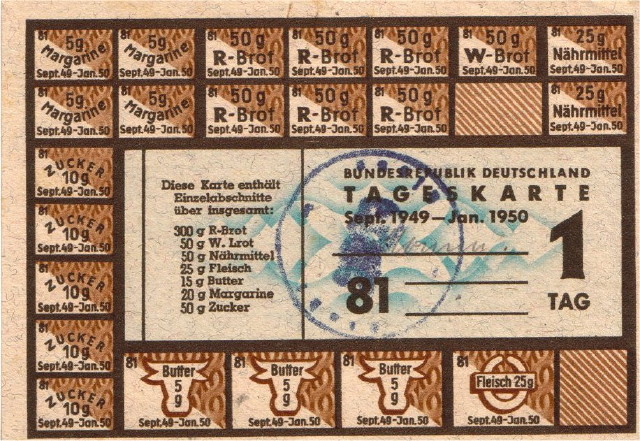As noted yesterday, there were severe food shortages in Germany after the war. Those continued for several years. Here are some details from "The U.S. Army in the Occupation of Germany, 1944-1946" by Earl F. Ziemke.
For the average German, however, the most pressing concern in the spring of 1946 was food. The daily ration for the normal consumer in the British zone dropped to 1,042 calories a day in March and in the French zone to 980 calories..
Germany was feeling the impact not only of its own but of a worldwide food shortage.
The ration in the U.S. zone was 1,550 calories per day, but reduced grain imports would no longer support that.
Clay ... reduced the ration in the U.S. zone on 1 April to 1,275 calories, which was still about a third more than the indigenous supplies could sustain. In the fourth week of May he had to reduce again to 1,180 calories. To meet these levels the Army in April and May released from its own stocks over 30,000 tons of cereals, canned goods (corn, peas, and tomatoes), dried skim milk, dehydrated potatoes, and dessert powder.
("Clay" is General Lucius D. Clay, who went on to play a key role in the Berlin Airlift.)
Here's a separate account (in German) about rations in Vienna, Austria in 1945:
-
833 calories: ordinary consumers
-
970 calories: employed
-
1,315 calories: workers
-
1,620 calories: heavy labor
In November 1947, the ordinary ration was up to 1,700 calories. Most restrictions were removed in 1950.


